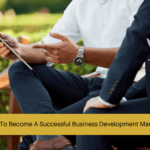
Consultant Sales Training – How To Close Sales Easily
Consultant sales training is crucial for not only new Consultants, but also for seasoned Sales Professionals who want to refresh their sales process, and even learn new skills and ideas.
Sales consulting can be a very lucrative career; because if you know your industry and craft well, the opportunities are endless.
In this article, we’ll explore:
- The upfront requirements to be a successful Consultant
- How to position yourself as a specialist
- The various aspects of consultant sales training, to ensure you’re successful in your field
Consultant Sales Training – How To Close Sales Easily
Requirements To Be A Consultant
The first part of your consultant sales training should be understanding and having clarity on what’s required to be successful Consultant.
Consulting; although lucrative, can also be very competitive.
There are a number of key things you’ll need to focus on to ensure you’re successful. These are:
- Having a business owner mindset; versus an employee mindset
- Pick a niche that you want to serve and sell to
- Know your ideal audience
- Have lead generation systems
- Implement your sales process
- Understand the various sales methodologies, and choose what works
- Consistently deliver results
- A system for referrals
We’ve written an in-depth article to teach you how to reach all of the points shared above.
For new Consultants, read the related article below:
Related article: How To Become A Sales Consultant – Your Final Guide
Consultant Sales Training – How To Position Yourself As A Specialist
Another important and vital tip in your consultant sales training, is your positioning strategy.
Having been a part of literally thousands of sales meetings and presentations, Consultants generally approach their sales with this approach:
- They say hello, and build some basic rapport
- Present their products or services
- They ask if there are any questions, and meekly ask for the sale
- Objection handling, and then again – ask for the sale
Although this may be common practice, this approach will keep you at a mediocre level at best and positions you as just another commodity.
A commodity is a person or product that is common place; that they can get anywhere.
Being positioned as a commodity, will mean that you won’t stick out with your potential clients; and you may even encourage them to price shop on your offer.
A specialist on the other hand, is a person who positions themselves as an authority.
Instead of presenting their products or services upfront, they diagnose the situation, issues, pain points, and learn what it is their potential clients ideally want to achieve.
They then prescribe what’s needed, and clearly identify how their product or service will help them overcome their pain points and serve their goals.
An important part of your consultant sales training should be switching from the usual commodity stance, to that of a specialist approach instead.
Related article: How To Position Yourself As A Trusted Advisor
The Aspects Of Your Consultant Sales Training
Although there are various forms of consultant sales training; from in person workshops to online programs and courses, a vital part of your consultant sales training should be to follow a systematised process.
A sales process is a step by step road map that you can follow, that gives both you and your potential clients certainty; and if they are in fact qualified – will help you win the sale.
Certainty is crucial for sales success; not only does it allow rapport and trust to build, but it also puts you in the driver’s seat of the sales conversation.
People like to be led by competent people; and the same is true in sales.
The sales process is key to your consultant sales training, because it allow you to know where you’re at in your sales conversations, rather than just hope and wing it instead.
Your Consistent Sales Process
Although there are many types of sales methodologies out there, we teach a proven and highly successful process called The 5% Sales Blueprint.
The 5% Sales Blueprint was designed with both the sales professional, and your potential client in mind.
For a sale to be successful, both parties would need to be happy and satisfied, so we created it to accomplish both these outcomes.
The steps in The 5% Sales Blueprint are:
- Goal setting for success
- Sales psychology – why people buy
- The importance of using a sales process
- Building rapport
- Setting pre-frames
- Finding pain
- Learning desire and pleasure
- Money talk
- Presenting
- Handling objections
- Asking for the sale
Your sales process may be similar or completely different; or perhaps even like the example we used with the average salesperson.
Either way – it’s imperative that you use a trusted sales process if you want to consistently win more sales.
Related article: The Sales Process – A Step By Step Guide
Consultant Sales Training #1 – Prospecting
Once you’ve got your positioning and sales process in line, the next stage of your consultant sales training is learning how to bring in clients; also known as prospecting or lead generation.
There are two kinds of sales prospecting methods.
Inbound Prospecting
Inbound prospecting is the method of setting up lead generation systems, where the leads come to you.
This generally involves setting up a website, landing pages for where people will go to when they click on your offer, and then driving advertising pay per click campaigns to your website or landing page.
Outbound Prospecting
Outbound prospecting is the method of proactively reaching out to your potential clients.
Prior to starting your outbound lead generation efforts, we recommend you create a sales strategy plan, and well as a marketing plan.
This will help you identify where your potential clients hang out; and how to reach them.
In our consultant sales training, we teach our students in their outbound prospecting activity to reach out by email, and then follow up with a call if need be.
They find emails of their potential clients (who would qualify using the BANT method) on LinkedIn, and then scrape emails using a tool.
Consultant Sales Training #2 – Rapport
Rapport is an important part of the sales process, because people buy from people they like and trust.
True rapport is the art of finding commonality between you and your potential client.
As a Consultant, you may have been taught that rapport is being enthusiastic, cheerful and excited to meet and sell.
What happens though – if your potential client isn’t feeling particularly warm that day?
All of a sudden – you’re nothing alike.
And you’ve just broken rapport.
Rapport consists of using the communication ratio, pacing and leading, and of course – mirroring.
To learn more about rapport, read the related article below.
Related article: A Guide To Building Sales Relationships/ Building Rapport
Consultant Sales Training #3 – Setting Expectations
Setting expectations are another important part of your consultant sales training.
At The 5% Institute, we call this a Pre-Frame.
Also known as an intent statement; a Pre-Frame is setting up key expectations with your potential client, so that you lead the conversation, create certainty, and know that you’re there to prescribe solutions to their situation.
This does two key things:
- It positions you as a Specialist, rather than just another eager salesperson
- It eliminates major sales objections
By setting a Pre-Frame, you’re making sure that you’re meeting with key decision makers.
Many Consultant’s make the mistake of presenting to people who aren’t decision makers, which results in potential clients saying, “They need to speak with XYZ”.
By using the BANT method for qualification, you can ensure up front that you’re meeting with decision makers.
Secondly in the Pre-Frame you want to let people know that at the end of the conversation; you’d like to know their thoughts on whether you can in fact assist, or whether you can’t.
This ensures you get a definite yes, or definite no.
Finally – you want permission to ask deep diving questions.
Questions are one of the foundational pillars of your consultant sales training.
Related article: How To Position Yourself As A Trusted Advisor
Consultant Sales Training #4 – Questions
As mentioned, one of the key pillars of your consultant sales training is asking the right questions.
Questions can come in various forms, and should be asked to do the following:
- Learn about their situation
- Understand their pain points
- Find out their desires and preferred outcome
- Move them towards the sale
Finally, you also want to ask questions that help people sell themselves.
Questions that help people sell themselves, are called tie down sales techniques. You can learn more about this method here.
Below, we’ve included a related article to help you learn what kind of consultative questions you should be asking.
Related article: 10 x Powerful Sales Discovery Questions To Add To Your Toolkit
Consultant Sales Training #5 – Presenting
As previously mentioned, presenting correctly is an integral part of positioning yourself as a specialist, rather than just another commodity.
As per our article here in Entrepreneur, salespeople generally do something called premature presentation.
This means they have a spray and pray approach; hoping something they say will stick, and that they’ll win the sale.
Instead, when presenting, you should follow a system that bridges the gap of your product or service, to the pain points and desires they have.
This way, you prescribe your product or service; rather than position yourself in a way where you need the sale.
Final Thoughts
There are many other aspects to consultant sales training, as mentioned in this article.
To recap; positioning, sales training, and sales process are all key – and is the difference between a mediocre Consultant, and one who sits in the top 5% of their industry.
Want To Learn Exactly How To Close Sales – Consistently & Easily?
If you’re committed to wanting to learn exactly how to close sales consistently and more easily, then you may be interested in our sales blueprint.
Our online sales training course is self-paced, affordable, and completely online for your convenience.
Click the link below to learn exactly how The 5% Sales Blueprint can help you learn how to close sales on a consistent basis, and will get rid of all the guesswork.



